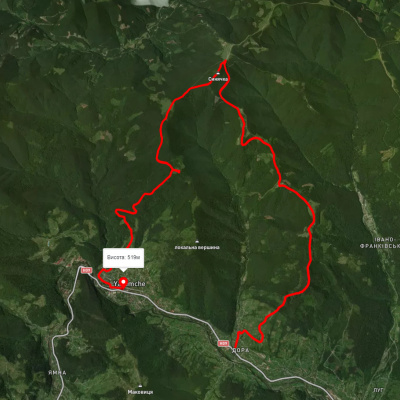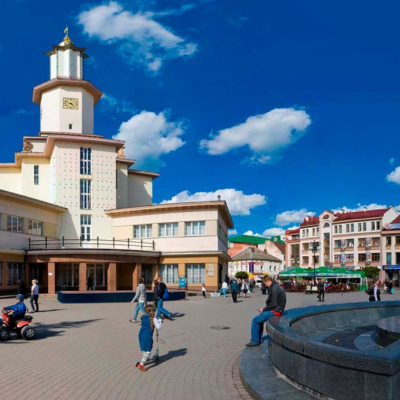Ivano-Frankivsk Museum of Local Lore
The most common way to get to know Ivano-Frankivsk is from its central part, where one of the city's most magnificent buildings, the Town Hall, which houses the Ivano-Frankivsk Museum of Local Lore, attracts visitors' attention. It is, so to speak, a prologue before getting to know the city and the region as a whole. It is here that you can learn about the interesting, rich, and proud history of the Carpathian region.
The Ivano-Frankivsk Museum of Local Lore is a significant scientific and cultural center of the Carpathian region. It has exposition departments of nature, history, folk art, iconography, and non-exposition departments: funds, scientific and educational, scientific and methodological, and the department of protection of historical and cultural monuments. It has the largest collection of historical, ethnographic, and cultural monuments in the entire Carpathian region.
The Ivano-Frankivsk Museum of Local Lore was opened on 01.05.1940. At that time, the museum was located in a building at 7 Halytska Street. There were departments: historical, natural history, folk art, and a library. The museum's collections consisted of 15,500 items, which included the collections of the Pokuttya Museum, the Hutsul Museum in Zhab'ye, and some private collections. The museum had a library and an archive.
In the spring of 1941, the museum organized archaeological excavations in the village of Krylos in the Halychyna district. An Old Russian settlement was found on Yuriyivska Hill.
During World War II, a significant part of the museum's collections were evacuated to the east and never returned. During 1941-1944, the remaining part of the museum collections was looted. On August 01, 1944, the museum resumed its work.
After the end of World War II, during the establishment of Soviet power, in the early 50s, irreparable damage was done to the museum's collections: in 1952, 2927 exhibits "hostile to the Soviet government and the materialistic worldview of workers" were written off and destroyed, and in 1953, 600 exhibits were transferred to Kyiv (their fate is unknown, and no documents have been found on where they were taken).
In May 1957, the museum exhibits were transferred to the City Hall. On April 26, 1959 , after a major overhaul of the city hall, a new museum exhibition was opened here. The current city hall was built between 1929 and 1935. The purpose of the town hall was not only for "shops and cheap restaurants," but also, according to the project, the second and third floors were to house the future Pokuttya Museum, the city library, and the archive. The architect of the building was Stanisław Treła. The building was constructed in the modernist style of the time, with a cross at its base, a tower rising from the cross section, and ending in a dome in the form of a military helmet. The total height of the town hall is 49.5 meters. The dome of the town hall is covered with copper and gilding. The Ivano-Frankivsk City Hall is the only public building in Ukraine with a gilded top.
Today, the museum is a prominent scientific, cultural, and educational institution in the Carpathian region. Collecting is an important part of the museum's work. Today, the museum's collections include more than 130,000 items, which have become the basis for the construction of new expositions and permanent exhibitions.
Research is the basis of almost all the museum's activities. This includes scientific acquisition of funds, scientific organization of accounting, preservation, conservation and restoration of collections. The collection of the Ivano-Frankivsk Museum of Local Lore is divided into 31 groups: archeology, clothing, wood, ceramics, vytynanka, knitting, pysanka, philately, icons, sculpture, documents, etc. The staff of the Ivano-Frankivsk Museum of Local Lore is engaged in publishing activities. The publication of booklets, brochures, invitations, exhibition catalogs, and guides to the museum and its branches is a rich and interesting heritage of local historians.
Every year, the museum is visited by about 150-155 thousand people, more than two thousand excursions are conducted, and about 180 exhibitions are organized. Every year, the museum organizes archaeological expeditions, holds scientific conferences, and publishes "Scientific Notes" and other literature. It provides methodological guidance to public museums.The following departments operate as departments: Ivan Franko Literary and Memorial Museum (established in 1953) in Kryvorivnia village, Verkhovyna district; M. Hrushevsky Museum in Kryvorivnia village, Verkhovyna district. Kryvorivnia village, Verkhovyna district (established in 2002); P. Haruk's house-citizen in Kryvorivnia village (founded in 1978); Les Martovych's literary-memorial museum in his native village Torgovytsi, Horodenkivskyi district (opened in 1971).); the Literary Museum of Prykarpattia in Ivano-Frankivsk (founded in 1986), which reveals the development of writing in our region from the fifteenth century to the present day; the Historical and Local Lore Museum in Solotvyn, Bohorodchany district (established in 2001).) on the basis of the O. Fedak Public Museum of History and Local Lore; O. Dovbush Museum of History and Local Lore in Pechenizhyn, Kolomyia district (established in 2004); and the Hutsulshchyna Museum of History and Local Lore in Verkhovyna.
The Ivano-Frankivsk Museum of Local Lore cooperates with the State Archives of Ivano-Frankivsk region, higher educational institutions of the city, Ivano-Frankivsk Regional Universal Scientific Library, Ivano-Frankivsk Regional Library for Youth, Ivano-Frankivsk Regional Organization of the National Union of Local Lore of Ukraine, Shevchenko Scientific Society, Ukrainian Society for the Protection of Historical and Cultural Monuments, Educational and Methodological Center for Culture and Tourism of Prykarpattia, Regional State Center for Scientific and Technical Research, and the State Museum of History and Culture.
The museum's exposition departments are: nature, archeology, history and folk art. The museum also has the following departments: funds, restoration, scientific and methodological, scientific and educational, advertising, printing and information.
Department of Nature: The exposition of the department introduces visitors to the natural features and biodiversity of Ivano-Frankivsk region. It presents samples of rocks and minerals, fossils and prints of animals that lived in ancient geological times. The relief features of Prykarpattia are revealed with the help of a gypsometric map and a geological collection. The visitors' attention is drawn to the hall where the fauna of the region is presented, in particular those species listed in the Red Book.
Department of Archeology: The exposition of the Department of Archeology presents archaeological cultures of the Stone Age, Copper Age, BronzeAge and Iron Age. In particular, the cultures of the Neolithic era are highlighted: linear-band ceramics, Trypillian culture. In the Bronze Age, tribes of the Corded Pottery culture, Komarivska culture, Noah culture, Thracian Halstatculture, and others lived in the Carpathian region . In the early Roman period, the Carpathian region was inhabited by tribes of the Chernyakhivska and Lipytska cultures. Finds of these cultures are displayed in the museum's windows. The exposition also includes monuments of the Shevorska culture.
Department of History: The exposition of the history department covers the period from the Galician principality and the Galicia-Volyn state to the end of the XX century. The halls contain interesting finds discovered during the research of the chronicle of Galicia's grave. The museum houses a unique exhibit - a stone sarcophagus in which Prince Yaroslav Osmomysl was buried. In the showcases, you can also see samples of the iconic Old Rus small metalwork, products of local craftsmen, weapons, etc.
One of the exhibition halls highlights the history of the foundation and development of the city of Stanislaviv (Ivano-Frankivsk). The department of 20th century history presents the First World War and the ZUNR. There are also exhibits from the Second World War and the UPA. The museum presents rural life and city life of the late nineteenth and early twentieth centuries.
Department of Folk Art: The exposition of the Folk Art Department introduces such types of folk art as weaving, embroidery, wood carving, metal and leather artistic processing, and ceramics. Particularly noteworthy is Kosiv ceramics, which is included in the UNESCO Representative List of World Heritage. The halls feature works by famous mid-nineteenth-century pottery masters P. Koshak and tiles by O. Bakhmatyuk. The folk costumes of the four ethnographic regions of the Carpathian region are displayed separately: Hutsul, Boykivshchyna, Pokuttya, and Opillya. Viewers can also get acquainted with the collection of pysankas, gerdans, sylianoks and the works of the famous Carpathian master P. P. Khoma.
Restoration Department: The halls of the Ivano-Frankivsk Museum of Local Lore display works of sacred art representing examples of Western Ukrainian professional and folk art painting. The collection, including icons from the 16th to the 20th centuries, which mainly came from the former Museum of Atheism in Ivano-Frankivsk (liquidated in 1991), was on the verge of destruction. In 2009, the fundraising project "Let's Save the Treasures Together!" was launched to preserve and popularize the most valuable works of sacred art of Galicia in the IFCM collection. The author of the project "Let's Save the Treasures Together!" is the restorer Valerii Tverdokhlib. The sensational find, which had been in the IFCM's storerooms for years, was the 1773 icon "Savior on the Throne" from Serhiy Parajanov's brilliant film Shadows of Forgotten Ancestors.
Museum branches
- Literary Museum of Prykarpattia in Ivano-Frankivsk;
- M.Hrushevsky Museum of History and Local Lore in Kryvorivnia;
- Ivan Franko Literary and Memorial Museum in Kryvorivnia;
- Museum "House-Citizen" in the village of Kryvorivnia;
- Literary and Memorial Museum of L. Martovych in Torgovytsia;
- O. Fedanko Museum of History and Local Lore in Solotvyn;
- Historical and Local History Museum of O. Dovbush in Pechenizhyn;
- History and Local Lore Museum "Hutsulshchyna" in Verkhovyna.
Working days: all except Monday
Opening hours: 10:00 to 17:00.
Accommodation around Ivano-Frankivsk Museum of Local Lore:
Які маршрути проходять повз Ivano-Frankivsk Museum of Local Lore?
Пропонуємо пройти такі туристичні (пішохідні) маршрути через/біля Ivano-Frankivsk Museum of Local Lore: с. Пасічна, через с. Манява, Манявський вдсп., г. Велика Сивуля до с. Бистриця, с. Манява - пол. Монастирецька, с. Дора, через г. Синячка, пер. Пересліп, пол. Туршугувата, хр. Явірник до м. Яремче, с. Дора, через г. Синячка, пер. Пересліп до м. Яремче, с. Дора, через г. Синячка, пол. Чорногориця до м. Яремче, с. Дора, через г. Синячка, хр. Чорногориця до м. Яремче
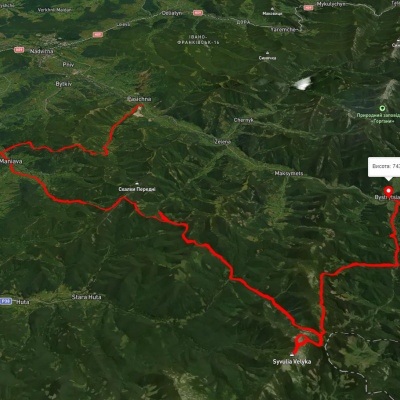
с. Пасічна, через с. Манява, Манявський вдсп., г. Велика Сивуля до с. Бистриця
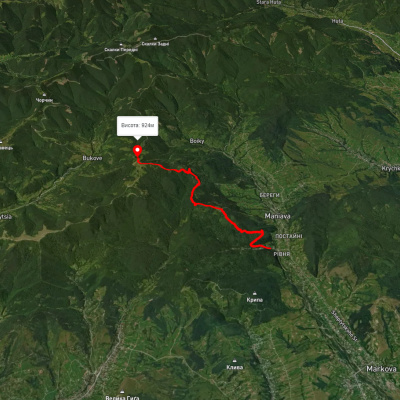
с. Манява - пол. Монастирецька
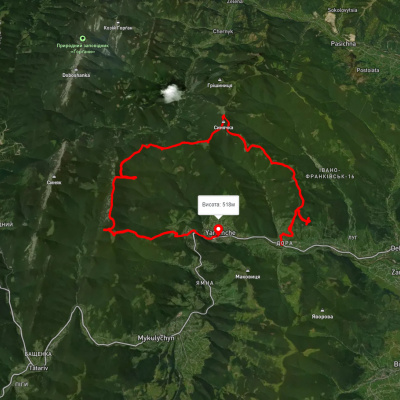
с. Дора, через г. Синячка, пер. Пересліп, пол. Туршугувата, хр. Явірник до м. Яремче
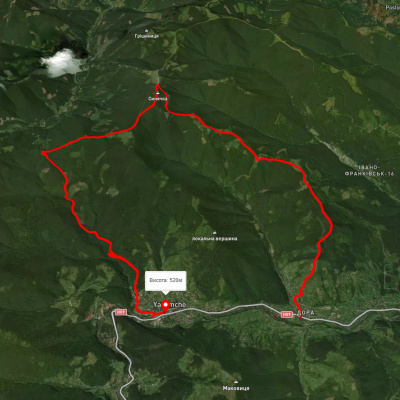
с. Дора, через г. Синячка, пер. Пересліп до м. Яремче
